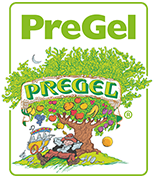
Families across the U.S. continuously take inventory of the goods in their refrigerator, cupboards and pantries before sitting down to complete a grocery list that will suffice each week. This includes standard grocery items as well as necessary pharmaceutical needs which can be found in the aisles of the same establishment. Finding orange juice – whether pulp-free, with pulp, fortified with calcium & vitamin D, organic or frozen from concentrate – is nota problem. The number of consumable products has grown exponentially, 48,000 per typical American supermarket, and with it so has the selection of food warehouses to patronize. For many consumers a sense of grocery store overload can be paralyzing, and the expansion of grocers is showing no signs of slowing down anytime soon.
The basic protocol for patrons was to inform the grocer of their needs and a clerk would collect the requested items around the store while they waited. However, Saunders’ new store armed shoppers with baskets and gave them the opportunity to peruse the aisles to obtain their own goods. This method delighted shoppers and proved to be highly profitable, setting the standard business model for future food warehouses.
In the Beginning There Was the Groceteria
Everything has to start somewhere, including major grocery stores. As history states, the self-serve grocery industry has Clarence Saunders to thank for creating the foundation for this booming industry. Saunders’ famous Piggly Wiggly was the first known self-seve supermarket, otherwise known as a groceteria – a name earned by the market because they were reminiscent of the cafeteria-style eateries that were popular at the time. Before the conception of the wildly successful grocery chain in 1916, shopping for food was a real chore, with consumers having to visit several different locations to complete their outing.
Before concept stores like Piggly Wiggly, grocery stores were small with a focus on items such as canned goods, potatoes, sugar, slabs of bacon and tubs of butter. Separate establishments were necessary for specific items such as the butcher shop for meat, the fruit store for fresh produce; milk wagons with milk; and horse-and-wagon merchants sold items such as fish, rice and baked goods. However, despite the varying selection of items available at the local grocer, consumers had no aisles to stroll the way we do today.
According to groceteria.com, there was an explosion of chain stores in the 1920s, and then the 30s and 40s brought forth the supermarket (all segments of grocery in one central location that focused on the quantity of product offering with little to no design element of the brick and mortar location). The 50s and 60s introduced suburbs and shopping centers (brightly designed, easily recognized modern establishments in affluent areas), with the 1970s bringing discounters and warehouse stores (stores that boasted carpeting, specialty departments, etc.). In the 80s and 90s market segmentation led to the launch of upscale stores, warehouses (low-end stores transitioning to the model of an early 1930s supermarket) and mergers.
Bigger and Better
Modern-day stores are a fantasy come true for foodies, chefs and the typical shopper searching for quality and convenience.
Today’s establishments now design “man aisles” specific to masculine needs; incorporate hot food stations which have morphed into full-blown dining destinations that give quick serve restaurants major competition; give bakery display cases a more sophisticated decor to attract additional foot traffic;and adopt a myriad of customer loyalty programs to make consumers’ store visits more convenient with money-saving benefits.In addition, one could say supermarkets have transformed into superstores, as housing only meat, dairy, baked goods and produce departments is a thing of the distant past. For example, 21st Century shoppers are impressed with the luxury kind of amenities today’s supermarkets offer such as:
- Wine and spirit departments complete with tasting rooms and walk-in coolers
- Professional chefs
- Organic and specialty diet foods
- Staff dietitian
- Floral department
- Pet supplies
- Housewares
- Cosmetics
- In-store pharmacy complete with certified pharmacists
- Fresh seafood
Modern-day superstores are a one-stop shop for consumers’ wants and needs even outside of food. In some big-box stores photo studios and beauty salons are available onsite, as well as quick serve restaurants such as McDonald’s and Subway. The grocery industry has become such a financial power house that convenience stores and pharmacies have incorporated more grocery items into their formats as well.
Has the Industry Come Full Circle?
The grocery industry is saturated with sectors that satisfy all lifestyles – niche, standard, big-box and warehouse. It’s important not to confuse niche stores with the different locales as mentioned in the early 1900s model of shopping such as butchers, as the niche model references more lifestyle choices such as all-organic, ethnic or themed establishments to fit local clientele. Nowadays, everything organic from dairy products to cosmetics can be found under one roof.
This grocery evolution shows that the format of merchandising has been enhanced utilizing the same efficient formula of product expansion. Just as Piggly Wiggly quickly built an empire that exceeded over 1,000 stores in 40 states, according to neatorama.com, household names like Giant Eagle, Kroger and the like will continue to branch out in an effort to boost economy and the job market, while strengthening business partnerships with the suppliers stocking their shelves, and servicing growing communities with the quality goods that sustain typical consumers. So, how did we get here? The answer is simply the old adage of supply and demand.
